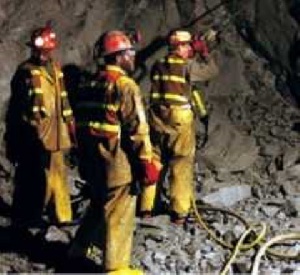Over 10,000 mineworkers across the country have lost their jobs over the past three years, the Ghana Mine Workers Union (GMWU) has stated.
General Secretary of GMWU, Prince William Ankrah, made this known in an address at the opening ceremony of the Union’s National Executive Council Meeting held at the Public Services Workers’ Union Centre in Kumasi from July 5-6, 2016.
He cited the high cost of operations, lack of reliable power for businesses, particularly in the mining industry for the job losses.
“Our quest for job creation as a nation has often been fraught with very weak inter-sectorial linkages,” Mr. Ankrah added.
He said the energy sector, for example, is so weakly linked to the manufacturing and productive sectors such that any downstream effects are quickly eroded by the failure of the energy sector.”
“As a union, we are extremely worried about this trend and the earlier tangible solutions are sought to this hydra-headed problem, the better for us all and our ailing economy.”
Adopt pragmatic steps
Mr. Ankrah appealed to the government of Ghana to “fashion out pragmatic solutions to the perennial energy situation in the country, particularly for the industry if the sector is to continue to attract the much-needed Foreign Direct Investment the country badly requires at this time.”
He said that “already, investor confidence in the industry appear to be waning whereas neighbouring countries like Burkina Faso, Ivory Coast, Mali and Guinea look more of preferred destination for mining FDI.”
Commodity Price Outlook
Touching on the prices of minerals, he said the global mining industry has witnessed three continuous years of slump arising mainly from plummeting commodity prices, particularly gold, thus slowing the influx of FDI and generally rendering the sector unattractive to investors.
Data from kitco.com, for instance, indicates that gold began 2013 with an average selling price of $1,670.95/oz in January but by December 2013, the price of the precious metal had dipped to $1,225.40/oz, indicating a 26.66 percent decline in price. Unfortunately, this price trend has continued through 2014 and 2015 to the first quarter of this year.
Interestingly, he said the average price of gold, which was $1,097.37/oz in January, this year, moved to $1,259.40/oz in May and $1,340.95/oz in July 2016.
“This represents a 22.19 percent increase in price of gold since January, this year. Even more refreshing is the latest bullish prediction that gold price may likely hit $1,500 by the close of this year,” he said.
“This is certainly good news for industry participants. However, the bearish have maintained that the recent jump in the price was mainly influenced by two factors namely the British exit from the EU (Brexit) and the quantitative easing by the US Federal Reserves and could be short-lived,” he said, adding that “Barring these bearish views, this certainly is a positive development for the union and the industry at large and could open up the industry again to bustling activities, create jobs, impact the Union and the economy in many ways.”
According to him, the consequential effect of this positive trend in the commodity price, year-to-date, has seen a drastic reduction in the rate of redundancies compared to the same period last year.
Click to view details



Business News of Wednesday, 10 August 2016
Source: dailyguideafrica.com
10,000 Mineworkers lose jobs
Entertainment
















